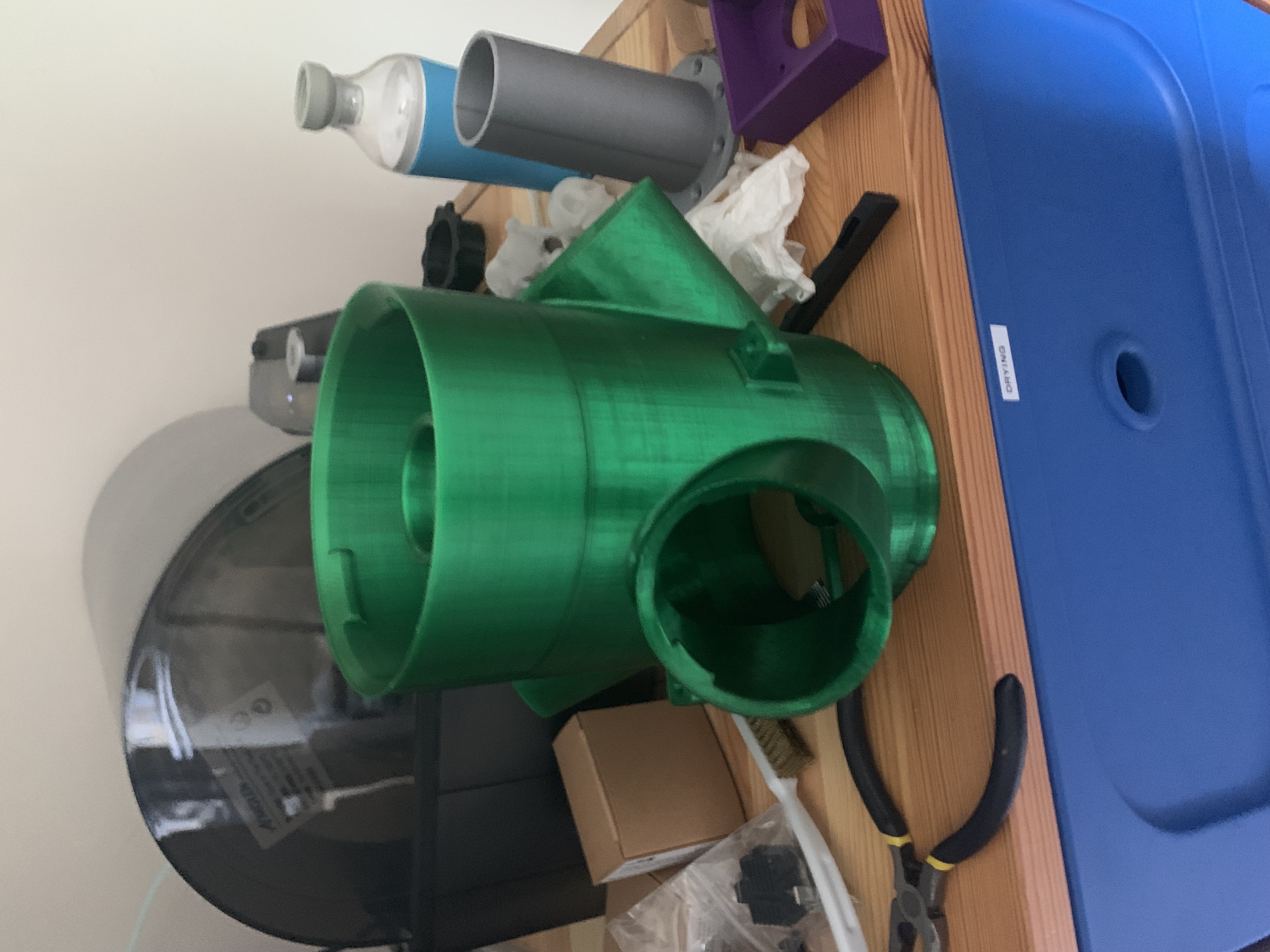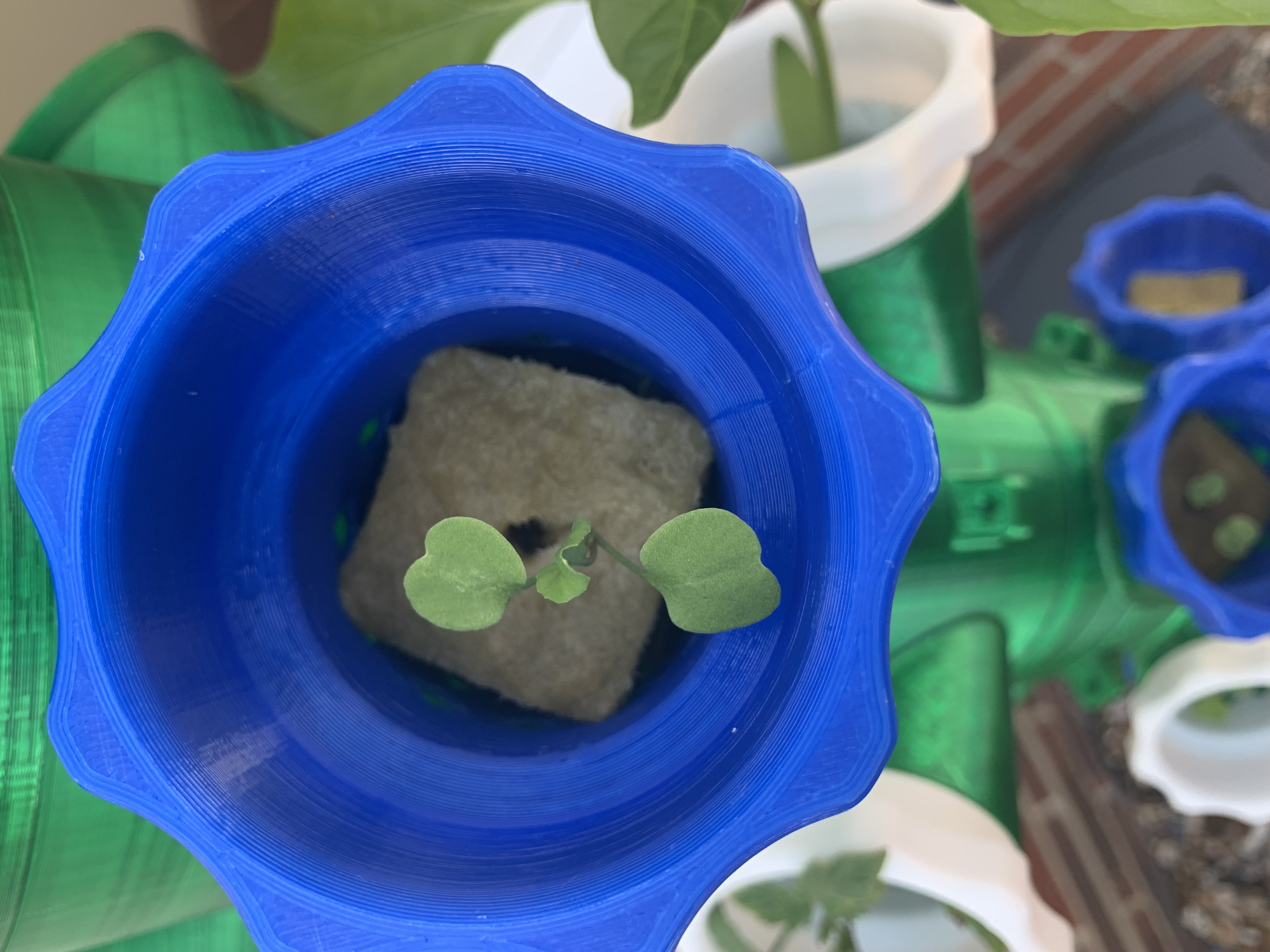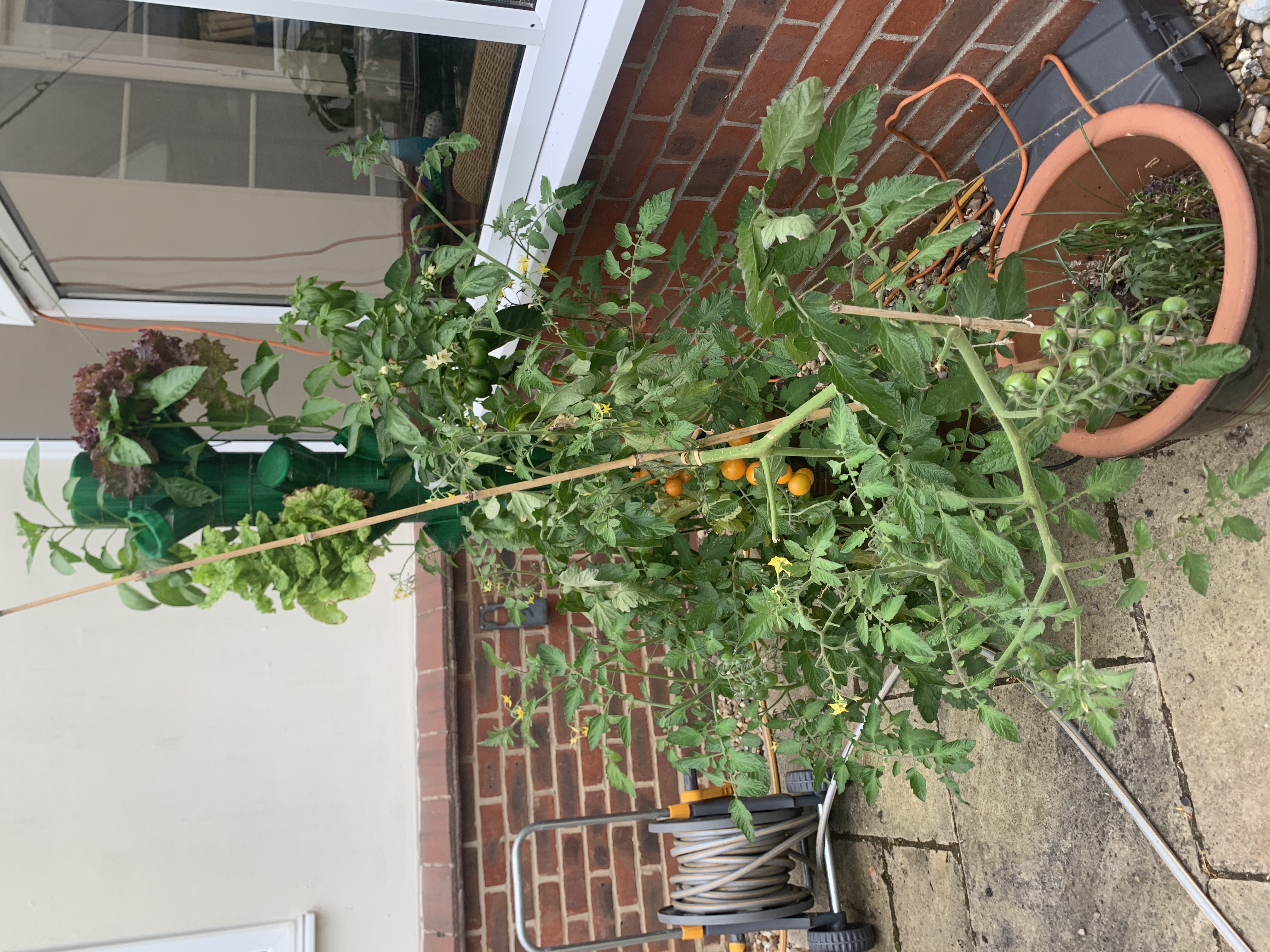3D Printed Hydroponics Tower
Last summer I became curious about trying hydroponics to grow basic greens on our patio. I looked at potential systems, but the UK pricing for solutions was expensive. For tower systems, these would typically cost £300-£500+ for a tower capable of growing 12-18 plants. This was more than I was prepared to spend to find out if it was something I was interested in.
Earlier in the year I purchased a Bambu X1C that I ran alongside an older Prusa Mk3S. So I thought I would see if I could build something myself.
Whilst browsing the excellent Printables I spotted an early version of a modular hydroponics tower. The design I used has since been iterated on and this version has some improvements over what I printed.
This modular system meant I could start small and build up to a larger tower at a later date.
The basic design is similar to lots of hydroponics systems. You have a reservoir of hydroponic solution. For a few minutes an hour during daylight, some of that solution is pumped to the top of the tower through a tube. It then drains through the center of the tower keeping the medium that the plants are grown in damp with the solution. The solution drains back into the reservoir to be reused.
Over time the plant roots grow to the middle of the tower and potentially down the center.
So using some PETG I had from another project I printed out a couple of plant sites, a cap and a base.

The base was mounted to an existing container with a lid that I used as the reservoir. I purchased a small pump with some tubing and some hydroponic solution and I was ready to go.
I started some seeds indoors in small rock wool cubes. Once they reached seedling size I moved them outside into the tower.

An important lesson I learnt after the first few weeks was to try and cover the cubes with clay pebbles as algae grows quickly on exposed damp rock wool.

The above show is from later in the season when the tomato plant at the base had started to fruit.
Basil grew like a weed in the system, it was impossible to consume it at the rate it grew. As such I still have a large container of dried basil for cooking.
All forms of lettuce/Spinach we tried grew well. We ended up getting into a cycle of staggering growing new plants. i.e. we would start a couple of seeds every week or so so that we had salad maturing every few days.
My chilli/peppers struggled with aphids, and after recommendations, I took a new approach this year.
The single tomato plant dominated the base of the tower and launched horizontally out too. The roots grew into the hydroponic reservoir and the plant produced more tomatoes than we’ve ever had from a single plant before.
One of the big advantages of this sort of system is the amount of water used compared with traditional farming. Research shows that hydroponics can use up to 90% less water than the equivalent in beds. My experience was that we only had to top the reservoir up a few times throughout the summer. As such, other than bar planting/harvesting the system has been mostly maintenance free.
Bill Of Materials
- Pump 20£
- Tubing 5£
- 3D Filament £50
- Hydroponic Solution £20 (we used around 15% of it in the year)
- Rockwool Plugs (the medium I grew in) £5
- 10L of clay pebbles £10
Additional things we already had :
- Reservoir container 40L
- Mains Timing Plug (for controlling the on/off times of the pump)
- Seeds
The physical tower structure cost under £100 compared with the £300-500 I’d seen for poorer commercial solutions. The other costs would be about the same.
The pump used approx 1.5kWh a month, but as this was only run during daylight hours this was covered by our solar.
The tower system should last many years, and if any parts fail I can always print a replacement. At the end of the growing season, the modules need a wash. This removes any residue from the hydroponic solution.
NB. Make sure whatever you use for a reservoir does not allow light in. Hydroponic solution plus light makes for an algae problem.
Support your tower. The prints have holes for guidelines/ropes, use them! We didn’t initially and had the entire tower topple in the wind. Fortunately, it only broke one section and damaged a couple of plants, but it could have been much worse.
For the more handy, it’s worth noting that instead of printing a tower it is possible to create similar systems using PVC downspouts. You cut into them and use a heat gun to form sites to add net pots.
